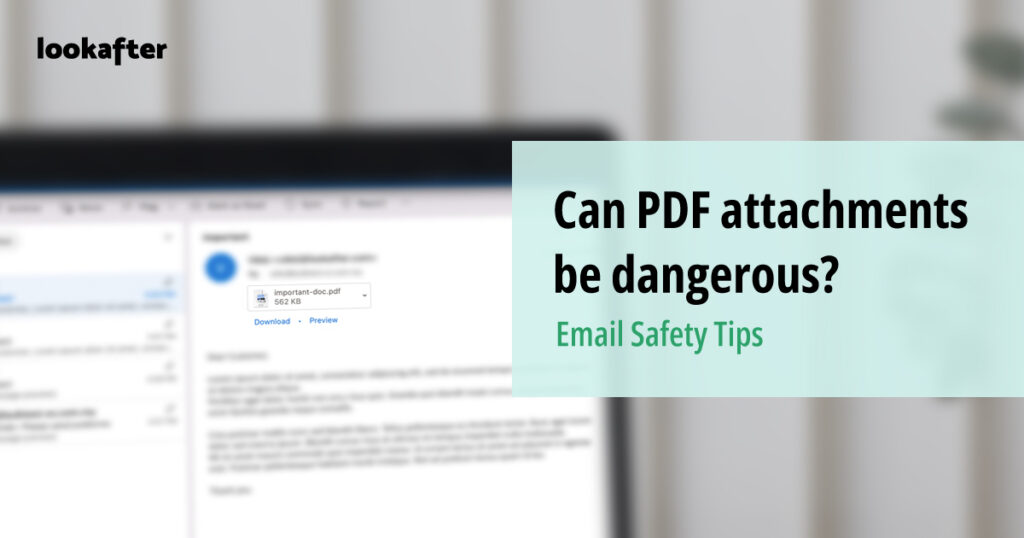Home > Empowering Tips > Email Safety Tips: Can PDF attachments be dangerous

PDF files are a common way to share documents, but they can also be a security risk. Hackers can use PDF attachments to deliver malware, ransomware, or other types of attacks.
One of the most dangerous things about PDF attachments is that they can contain hidden code. This code can be embedded in the PDF file in a way that is not visible to the user. When the PDF file is opened, the hidden code can be executed, which can lead to a variety of problems.
For example, the hidden code could be used to install malware on the user’s computer. Malware can steal personal information, encrypt files, or even take control of the computer. The hidden code could also be used to open malicious websites, which could also lead to malware infection or other problems.
Another danger of PDF attachments is that they can be used to exploit vulnerabilities in PDF readers. PDF readers are software programs that are used to open and view PDF files. These programs can have vulnerabilities that can be exploited by hackers.
For example, a vulnerability in a PDF reader could allow a malicious PDF file to execute code on the user’s computer, even if the user does not click on any links or open any attachments. This type of vulnerability could be used to install malware, ransomware, or other types of attacks.
Tips to Stay Safe
There are a few things you can do to protect yourself from the hidden dangers of PDF attachments:
- Be careful about opening PDF attachments from unknown senders. If you don’t know who the sender is, don’t open the attachment.
- Scan PDF attachments with antivirus software before opening them. This will help to protect you from malware that is hidden in the PDF file.
- Keep your PDF reader software up to date. This will help to protect you from vulnerabilities in the PDF reader.
If you do open a malicious PDF attachment, there are a few things you can do:
- Immediately close the PDF file. Do not click on any links or run any programs that are contained in the PDF file.
- Scan your computer with antivirus software. This will help to remove any malware that was installed on your computer.
- Change your passwords. This will help to protect your accounts from being compromised.
Conclusion
PDF attachments can be a security risk, but there are steps you can take to protect yourself. By being careful about who you open attachments from, scanning attachments with antivirus software, and keeping your PDF reader up to date, you can help to keep your computer safe from attack.